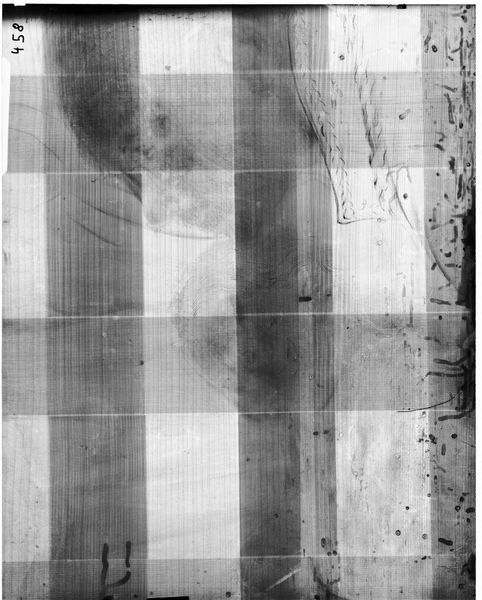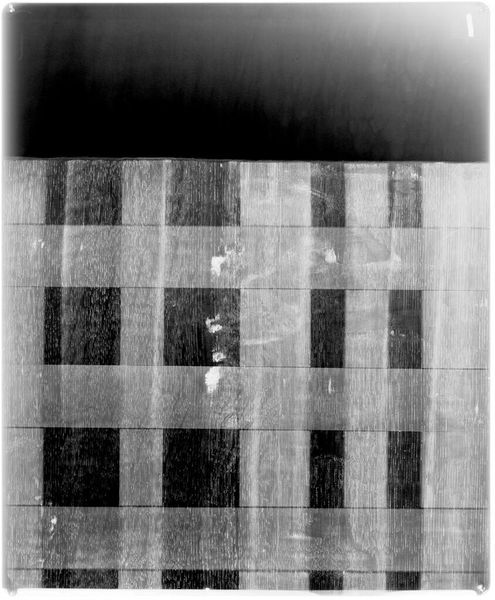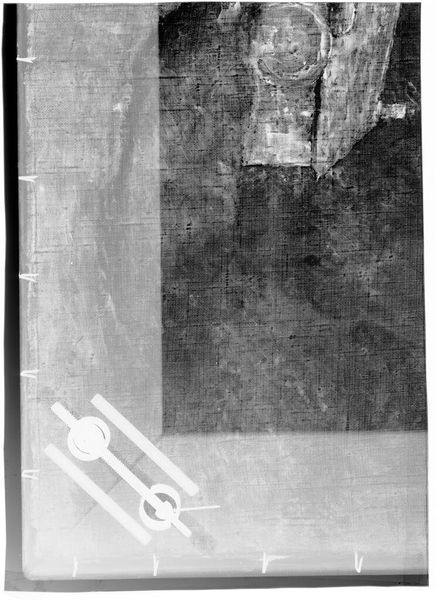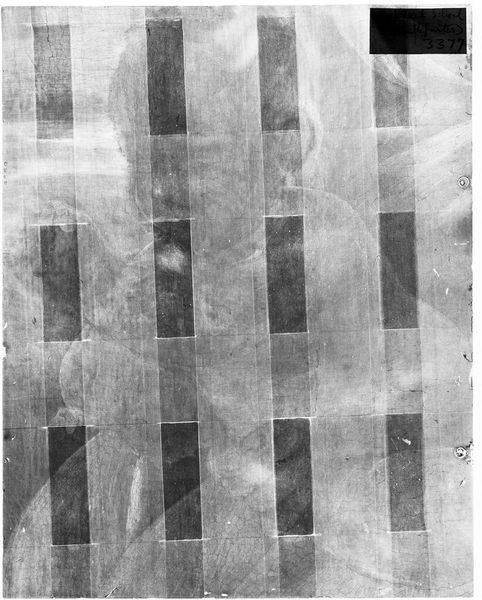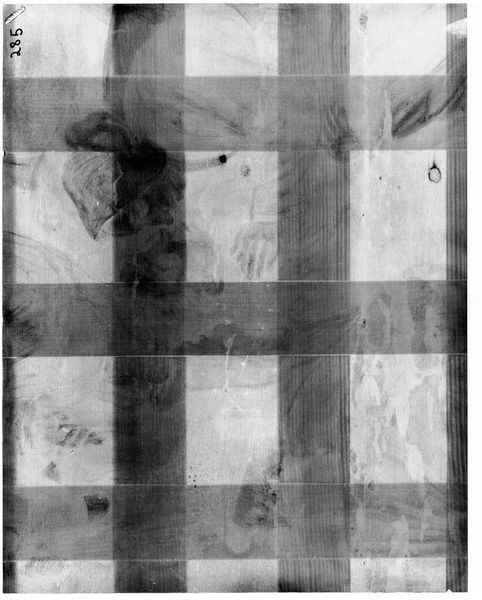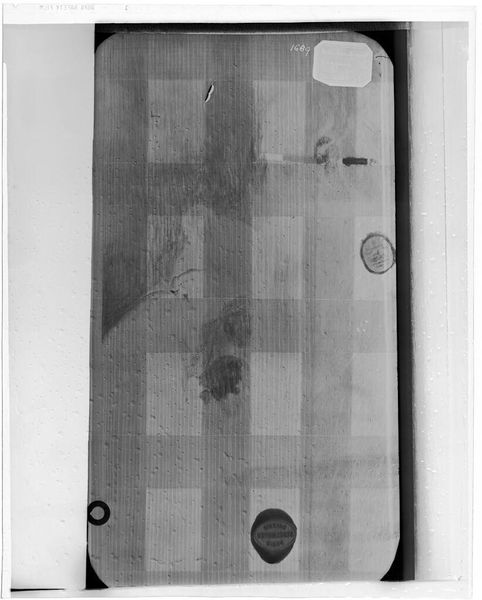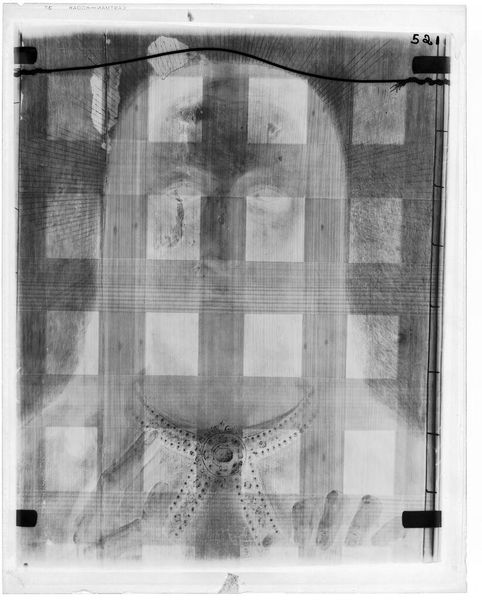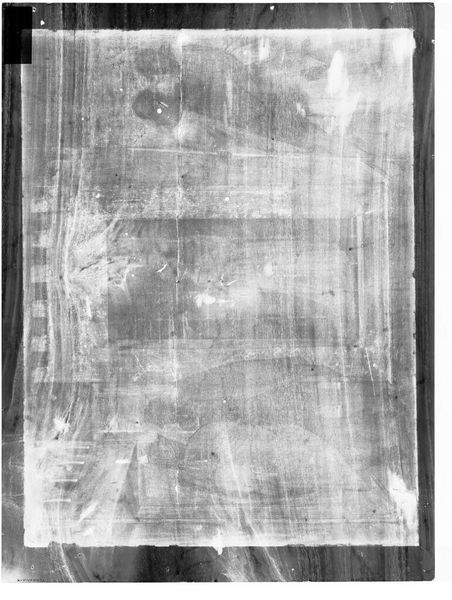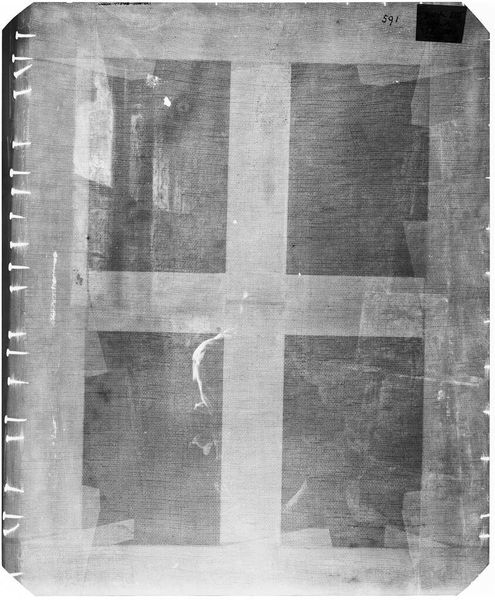
X-radiograph(s) of "Man in a Funny Hat"
Dimensions: film size: 7 x 8
Copyright: CC0 1.0
Curator: We’re looking at an X-radiograph of “Man in a Funny Hat” after Corneille de Lyon, part of the Harvard Art Museums collection. The film itself is 7x8. It looks… unusual. Editor: It's ghostly! The subject, though faint, is clearly present beneath the surface, almost like an apparition caught in a grid. Curator: Exactly. X-radiography allows us to see beneath the surface of a painting, revealing hidden layers, pentimenti, or even earlier compositions. It’s art history meeting science. Editor: It makes me think about the hidden lives of portraits – the power dynamics inherent in who gets depicted, and what gets concealed. This technique exposes those secrets, quite literally. Curator: And reveals the artist's process. Art institutions use techniques like this to authenticate and preserve works for future generations. Editor: To uncover not just the physical history, but also the social history embedded within these materials. It's a powerful tool for interrogating the stories we tell about art. Curator: Indeed. It offers a fresh perspective on the artwork. Editor: It’s more than just appreciating the surface, it’s confronting the deeper truths hidden beneath it.
Comments
No comments
Be the first to comment and join the conversation on the ultimate creative platform.
